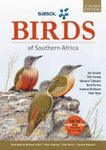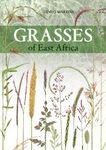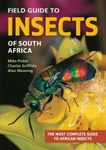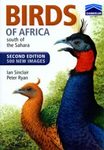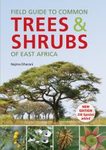By
Gehan de Silva Wijeyeratne
23 Jul 2019
Written for Paperback
This is a well-designed, simple, compact guide to a surprisingly large number of butterflies and a book which is likely to have a significant impact in recruiting more butterfly watchers to the conservation cause. The book is dedicated to Torben Larsen who authored
The Butterflies of Kenya and Their Natural History. I have a copy of this book, but given the weight and size, I have never entertained the idea of taking it with me on any of the wildlife watching visits I have made to East Africa. I say this to reinforce the point that these pocket guides are a brilliant idea because they serve a real need for compact, lightweight guides which are written in an accessible language and generously illustrated with photographs to serve a wide audience from already committed butterfly watchers to those who are beginners or simply an impulse purchase by someone who is on safari.
All but 20 pages in the book are taken up by the species accounts which cover 247 species. I really liked the layout which is very simple and easy on the eye. An introduction is followed by a section titled ‘Habit and Habitats’. The section heading and name of the butterfly are in a pinkish-red which visually reinforces the feel that the book is for beginners and holidaying tourists. A small map is colour shaded to indicate the distribution. The size is given and the sexes of the images are indicated by the usual gender icons. The text is very simple on the eye and not fragmented by category headings. On the whole a book that feels easy and welcoming. I am sure if this book is handed down by visitors to locals, it will help build capacity. More on this aspect of capacity building can be read on my review on the
Pocket Guide Birds of Namibia by the same publisher. In the ‘Habit and Habitats’ section, the authors capture well the essence of a butterfly and the descriptions will resonate with butterfly watchers who although not familiar with a particular species in East Africa may be familiar with related species from another part of the world
The species accounts are richly illustrated with at least two images per species but with several species having more images to show upperwing and underwing, sexes and seasonal or geographical variations. A noticeable number of species are depicted by images of museum specimens. All of the images are well exposed and sharp and the mix of images of live butterflies and the dead specimens does not detract from the quality of the imagery and their usefulness. However, there is a style clash and I hope that in successive future editions the specimens can be replaced with contributions from multiple photographers who have been able to take photographs in the wild. This is not simply for reasons of style, it is because a butterfly in the wild often looks very different to one with its wings stretched out on a museum tray. Having worked on photographic guides to butterflies myself, I know how difficult it is to obtain wild images and I would soften my comments on the mix by pointing out that this is a minor point.
The species accounts are ordered by family and subfamily as is usually the custom with books on birds and butterflies. The authors do not provide an introduction to the families and subfamily although this demarcation is clear from the running header. The absence of family and subfamily descriptions is not a detraction and is in line with what is designed to be a simple introduction to the 2,500 species found in East Africa. This is a staggering rich number to be covered across the five countries of Kenya, Tanzania, Uganda, Rwanda and Burundi. The introductory section includes a vegetation map with political boundaries and just over two pages of photographs and text describing the main vegetation types. The vegetation across East Africa is highly variable because of structural complexity in elevation and geological history. There are many areas of high endemism and many butterfly species will have restricted ranges. To be truly useful, pocket guides such as this will need to be at country level. However, an introductory guide such as this covering common species which are drawn from different countries is a good compromise that is commercially viable. I would imagine it would take many years of fieldwork for good country-level field guides to be developed even if sponsorship was available.
The end sections are slim with a one-page glossary and an index of scientific and common names.
As an introduction to the amazing diversity of butterflies, many of which are stunningly beautiful, this book serves well as an introduction and helps you to get started to putting a name to what you see.


































